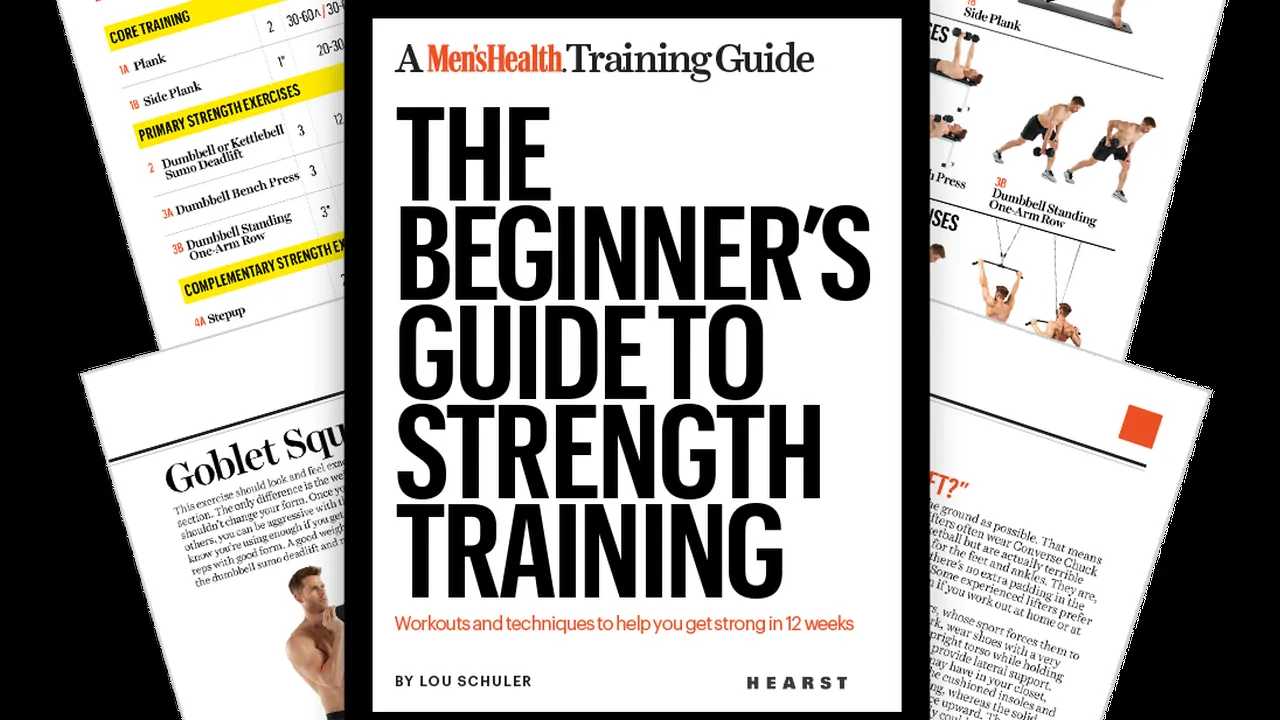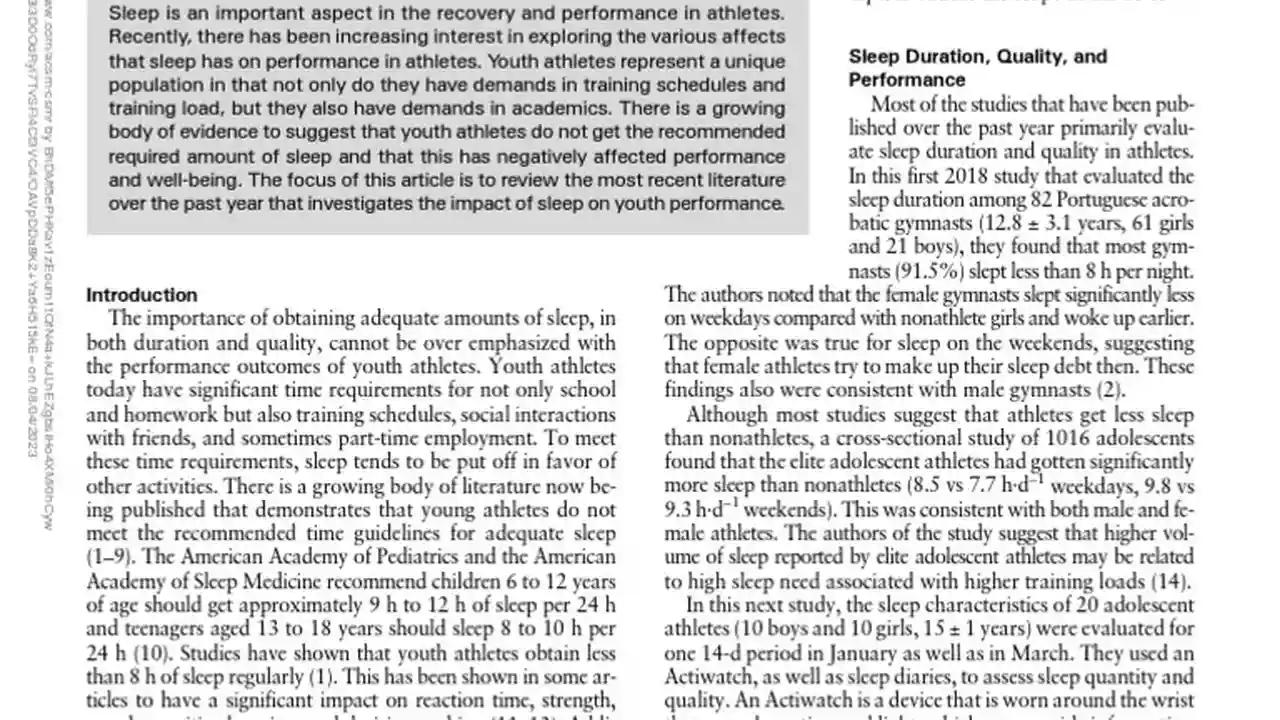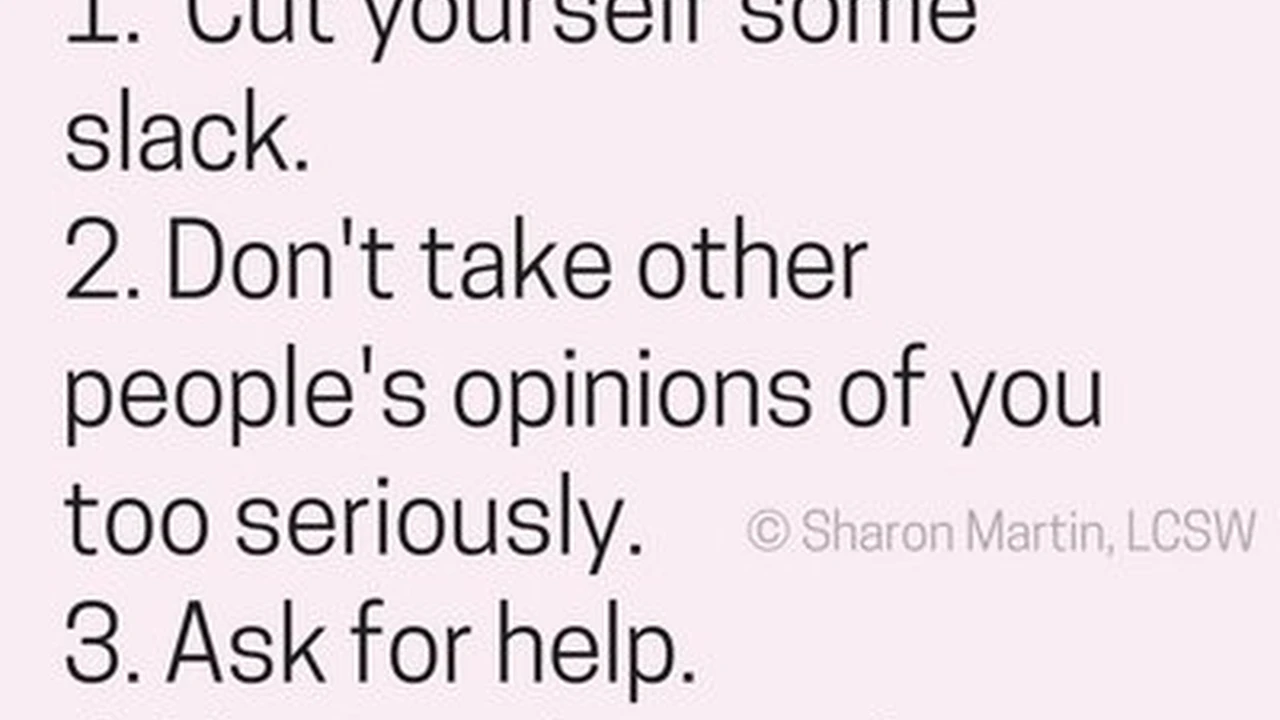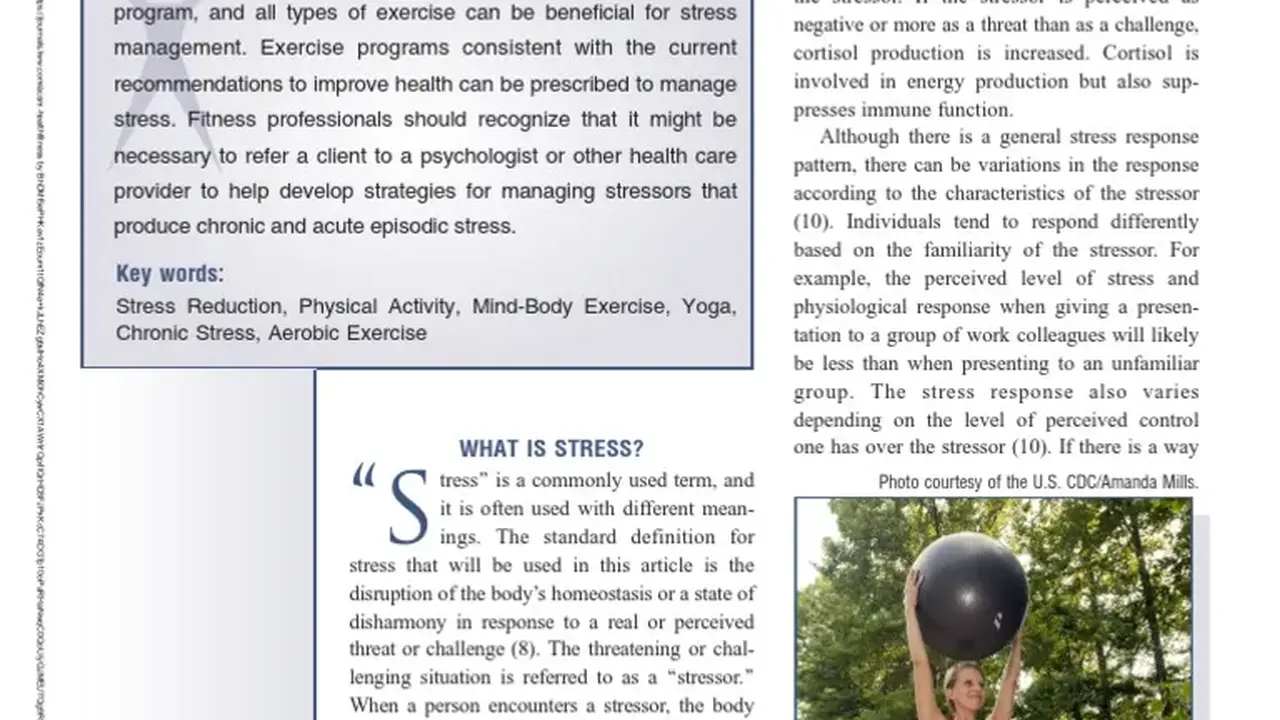The Ultimate Guide to Strength Training for Beginners
Sample meta description.

Understanding the Basics of Strength Training for Beginners
So, you're ready to dive into the world of strength training? Awesome! It's a fantastic way to improve your overall health, build muscle, lose fat, and feel amazing. But where do you even start? Don't worry, we've got you covered. This guide is designed for complete beginners, so we'll break down the fundamentals in a simple, easy-to-understand way. Think of this as your strength training 101.
First things first, let's define what strength training actually is. It's basically any type of exercise that uses resistance to contract your muscles. This resistance can come from your own body weight, free weights like dumbbells and barbells, resistance bands, or even machines. The goal is to challenge your muscles so they adapt and become stronger over time.
Why bother with strength training at all? Well, the benefits are numerous. Increased muscle mass leads to a faster metabolism, making it easier to manage your weight. Stronger muscles and bones reduce your risk of injuries. Strength training can also improve your mood, boost your energy levels, and even help you sleep better. Plus, let's be honest, who doesn't want to look and feel more confident?
Before you jump into a workout, it's important to understand the key principles of strength training. This includes things like proper form, progressive overload, and rest and recovery. We'll delve into each of these in more detail later on.
Essential Equipment for Strength Training at Home and Gym
You don't need a fancy gym membership to start strength training. In fact, you can get a great workout at home with minimal equipment. However, having the right tools can definitely enhance your experience and allow you to progress more effectively. Let's take a look at some essential equipment for both home and gym settings.
Home Strength Training Equipment Recommendations
For home workouts, the following are highly recommended:
- Resistance Bands: These are incredibly versatile and portable. They come in various resistance levels, allowing you to target different muscle groups and adjust the intensity of your exercises. A good set of resistance bands will cost you around $20-$50. Look for sets that include different resistance levels and door anchors for added versatility. For example, the TheraBand Resistance Bands Set (around $30) is a great starter kit.
- Adjustable Dumbbells: These are a fantastic investment as they allow you to increase the weight as you get stronger, without having to buy a whole set of dumbbells. Adjustable dumbbells like the Bowflex SelectTech 552 (around $400 per pair) are popular, but there are more affordable options like the Yes4All Adjustable Dumbbells (around $100-$200 per pair depending on the weight). Consider the weight range you'll need as you progress.
- Yoga Mat: Provides a comfortable surface for floor exercises like planks, push-ups, and stretching. A good yoga mat should be non-slip and offer adequate cushioning. The Manduka PROlite Yoga Mat (around $120) is a high-quality option, but the BalanceFrom GoYoga All-Purpose Yoga Mat (around $20) is a more budget-friendly choice.
- Pull-Up Bar: If you're serious about upper body strength, a pull-up bar is a must-have. Make sure to choose one that is sturdy and fits securely in your doorway. The Iron Gym Total Upper Body Workout Bar (around $30) is a popular and reliable option. Alternatively, you can invest in a power rack with a built-in pull-up bar for a more comprehensive home gym setup.
- Kettlebell: Kettlebells are great for full-body workouts, combining strength and cardio. Start with a lighter weight and gradually increase it as you get stronger. The CAP Barbell Cast Iron Kettlebell (price varies depending on weight, typically around $20-$100) is a solid choice. Consider a weight that allows you to comfortably perform exercises like swings and goblet squats.
Gym Strength Training Equipment Overview
At the gym, you'll have access to a wider range of equipment, including:
- Barbells and Weight Plates: For compound exercises like squats, deadlifts, and bench presses.
- Dumbbells: A wider range of weights than you're likely to have at home.
- Weight Machines: Machines isolate specific muscle groups and can be a good option for beginners. Examples include the leg press, chest press, and lat pulldown machines.
- Cable Machines: Offer a versatile way to perform a variety of exercises.
Product Comparison and Usage Scenarios
Let's dive deeper into some specific product comparisons and how you might use them.
Resistance Bands vs Dumbbells
Resistance Bands:
- Pros: Affordable, portable, versatile, good for beginners.
- Cons: Limited resistance, can be less challenging for advanced users, can break or snap if overstretched.
- Usage Scenario: Ideal for home workouts, travel, warm-ups, rehabilitation exercises, and adding resistance to bodyweight exercises.
Dumbbells:
- Pros: More challenging, allow for a wider range of exercises, more durable than resistance bands.
- Cons: More expensive, require more storage space, less portable.
- Usage Scenario: Ideal for building muscle mass, performing heavier compound exercises, and progressing in strength training.
Adjustable Dumbbells vs Fixed Dumbbells
Adjustable Dumbbells:
- Pros: Space-saving, cost-effective compared to buying a full set of fixed dumbbells.
- Cons: Can be bulky, weight adjustment can be time-consuming, some models are less durable than fixed dumbbells.
- Usage Scenario: Ideal for home gyms with limited space, individuals who want to progress in weight without investing in a large collection of dumbbells.
Fixed Dumbbells:
- Pros: More durable, quicker weight changes, more compact than adjustable dumbbells.
- Cons: More expensive, require more storage space.
- Usage Scenario: Ideal for commercial gyms or individuals who prioritize convenience and durability.
Key Exercises for Beginners Strength Training
Now that you have an understanding of the basics and some equipment options, let's get into the exercises. These are fundamental exercises that will form the foundation of your strength training program. Focus on mastering proper form before adding weight or increasing the intensity.
- Squats: Works your quads, hamstrings, and glutes. Start with bodyweight squats and progress to goblet squats with a dumbbell or kettlebell. Then, you can move on to barbell squats.
- Push-Ups: Works your chest, shoulders, and triceps. If you can't do a full push-up, start with knee push-ups or incline push-ups.
- Rows: Works your back and biceps. You can do dumbbell rows, barbell rows, or use a resistance band.
- Overhead Press: Works your shoulders and triceps. Use dumbbells or a barbell.
- Deadlifts: Works your entire body, but especially your back, hamstrings, and glutes. This is a more advanced exercise, so start with a lighter weight and focus on proper form.
- Plank: Works your core. Hold the plank for as long as you can maintain good form.
Creating Your First Strength Training Program for Beginners
Putting it all together, let's create a sample strength training program for beginners. Remember to consult with a healthcare professional before starting any new exercise program.
Sample Workout Routine (3 Days Per Week)
This routine is designed to be performed three times per week, with rest days in between.
Day 1: Upper Body
- Push-Ups: 3 sets of as many reps as possible (AMRAP)
- Dumbbell Rows: 3 sets of 8-12 reps per side
- Overhead Press: 3 sets of 8-12 reps
- Bicep Curls: 3 sets of 10-15 reps
- Tricep Extensions: 3 sets of 10-15 reps
Day 2: Lower Body
- Squats: 3 sets of 8-12 reps
- Lunges: 3 sets of 10-15 reps per leg
- Glute Bridges: 3 sets of 15-20 reps
- Calf Raises: 3 sets of 15-20 reps
Day 3: Full Body
- Squats: 3 sets of 8-12 reps
- Push-Ups: 3 sets of AMRAP
- Dumbbell Rows: 3 sets of 8-12 reps per side
- Plank: 3 sets, hold for as long as possible
Important Considerations for Beginners
- Warm-up: Before each workout, spend 5-10 minutes warming up with light cardio and dynamic stretching.
- Cool-down: After each workout, spend 5-10 minutes cooling down with static stretching.
- Rest: Allow your muscles to recover by getting enough sleep and taking rest days.
- Progression: As you get stronger, gradually increase the weight, reps, or sets.
- Listen to your body: Don't push yourself too hard, especially when you're just starting out.
Proper Form and Injury Prevention Tips for Strength Training
Maintaining proper form is crucial for preventing injuries and maximizing the effectiveness of your workouts. Here are some key tips:
- Control the Movement: Avoid using momentum to lift the weight. Focus on controlled, deliberate movements.
- Engage Your Core: Keep your core muscles engaged throughout each exercise to stabilize your spine.
- Maintain Proper Posture: Keep your back straight and your shoulders back and down.
- Breathe Properly: Exhale during the exertion phase of the exercise and inhale during the relaxation phase.
- Start Light: Begin with a weight that you can comfortably lift with good form for the recommended number of reps.
- Don't Be Afraid to Ask for Help: If you're unsure about proper form, ask a trainer or experienced lifter for guidance.
Nutrition and Recovery Strategies to Maximize Strength Gains
Strength training is only one part of the equation. Nutrition and recovery are equally important for maximizing your results.
Nutrition for Strength Training Beginners
- Protein: Protein is essential for muscle repair and growth. Aim for 0.8-1 gram of protein per pound of body weight per day. Good sources of protein include lean meats, poultry, fish, eggs, dairy, beans, and lentils.
- Carbohydrates: Carbohydrates provide energy for your workouts. Choose complex carbohydrates like whole grains, fruits, and vegetables.
- Healthy Fats: Healthy fats are important for hormone production and overall health. Good sources of healthy fats include avocados, nuts, seeds, and olive oil.
- Hydration: Drink plenty of water throughout the day, especially before, during, and after your workouts.
Recovery for Strength Training Beginners
- Sleep: Aim for 7-9 hours of sleep per night. Sleep is crucial for muscle recovery and growth.
- Active Recovery: On your rest days, engage in light activity like walking, yoga, or swimming to improve blood flow and reduce muscle soreness.
- Stretching: Regular stretching can improve flexibility and reduce your risk of injury.
- Foam Rolling: Foam rolling can help to release muscle tension and improve recovery.
:max_bytes(150000):strip_icc()/277019-baked-pork-chops-with-cream-of-mushroom-soup-DDMFS-beauty-4x3-BG-7505-5762b731cf30447d9cbbbbbf387beafa.jpg)






